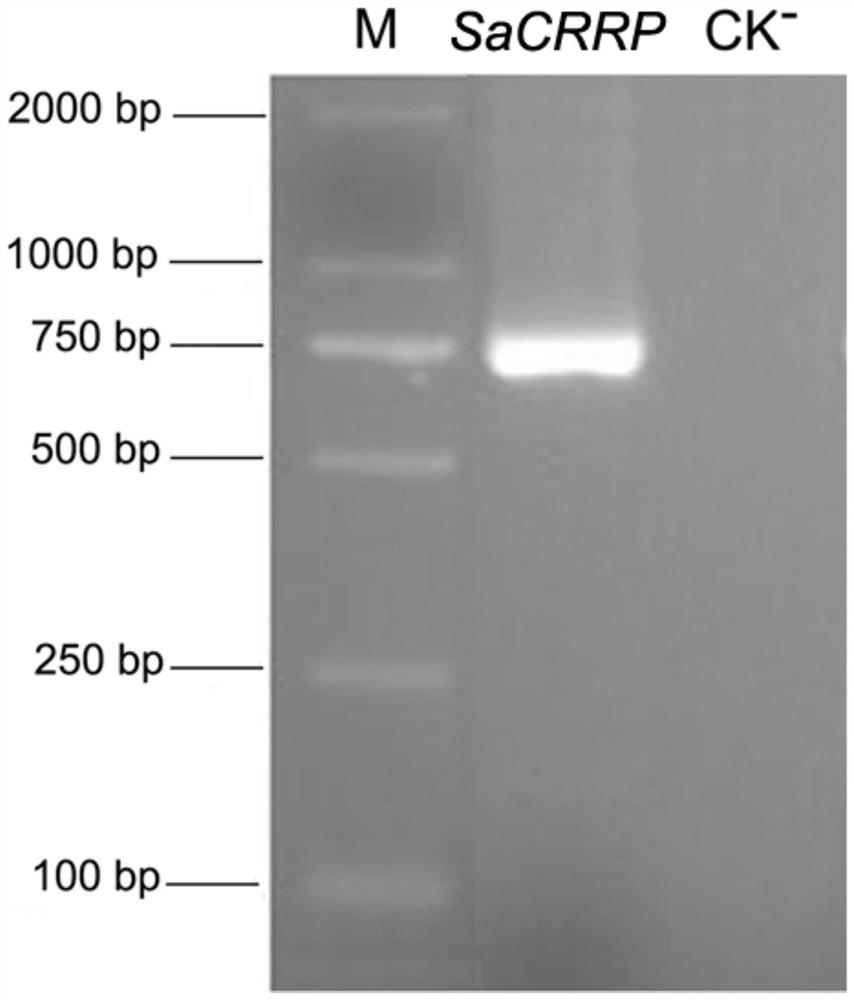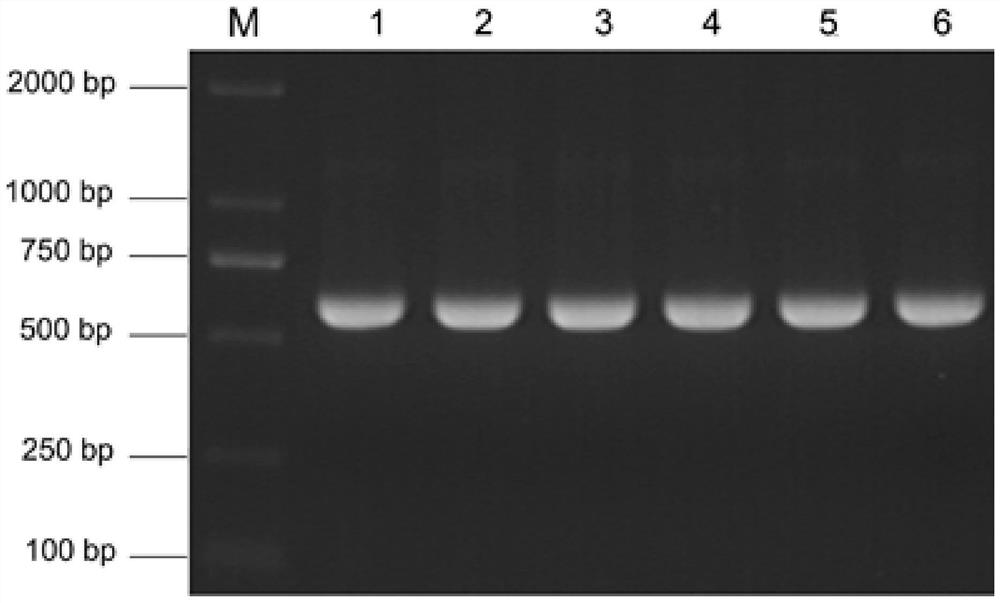Gene for improving cadmium resistance and cadmium content and reducing cadmium stress DNA damage and application of gene
A DNA damage and cadmium resistance technology, applied in the field of genetic engineering, can solve problems such as unresearched, and achieve the effects of increasing the root length of seedlings, improving soil heavy metal pollution, and increasing cadmium resistance and cadmium content
- Summary
- Abstract
- Description
- Claims
- Application Information
AI Technical Summary
Problems solved by technology
Method used
Image
Examples
Embodiment 1
[0039] Construction of cDNA library of cadmium hyperaccumulating mine type Sedum sedum
[0040] (1) Using the screened cadmium hyperaccumulating mine type Southeast Sedum (collected from an ancient lead-zinc mining area in Quzhou City, Zhejiang Province, and then transplanted to our laboratory) hydroponic seedlings as the material, treated with 400 μM·L -1 Cadmium chloride (CdCl 2 ) After the stress treatment, the total RNA of Sedum sedum under cadmium stress was extracted with a plant tissue total RNA extraction kit (Total RNA Purification Kit), and purified mRNA was obtained through oligo(dT)-fiber column filtration;
[0041] (2) Obtaining full-length cDNA
[0042] cDNA strand synthesis using SMART TM cDNA library construction kit completed;
[0043] Synthesis of the first strand of cDNA: using the purified mRNA obtained in the above step (1) as a template, SMART TM IVoligonucleotide (10μM) (sequence shown in SEQ.ID.No.3: 5'-AAGCAGTGGTATCAACGCAGAGTGGCCATTACGGCCGGG-3') ...
Embodiment 2
[0050] Screening and identification of cadmium-resistant transgenic Arabidopsis
[0051] (1) Extract the mixed plasmid of the cadmium hyperaccumulation mine type Sedum sedum cDNA library obtained in Example 1, and electro-transform Agrobacterium EHA105:
[0052] Use a plasmid DNA extraction kit to extract the mixed plasmids of the cDNA library, and electro-transform the extracted mixed plasmids into the EHA105 strain. The voltage used for electro-transformation is 2.5 V; the transformed products are cultured in 5 mL of LB liquid for 3 hours and then transferred to 100 mL of liquid LB (containing Fuping 50mg·L -1 +Kan 20mg·L -1 ) at 28°C for 3 days to obtain an Agrobacterium engineering cell line.
[0053] (2) Heterologous expression of Sedum sedum cDNA library in Arabidopsis thaliana
[0054] Arabidopsis thaliana transformation was carried out by the tidbit infection method, and seeds were harvested and dried after the Arabidopsis thaliana matured. The dried TO generation ...
Embodiment 3
[0061] (1) Construction of yeast expression vector
[0062] Using the screened cadmium hyperaccumulating mine type Southeast Sedum (collected from an ancient lead-zinc mining area in Quzhou City, Zhejiang Province, and then transplanted to our laboratory) hydroponic seedlings as materials, total RNA from plant tissues was extracted with Total RNA Prification Kit. The kit (Norgen Company) extracted the total RNA of Sedum sedum under cadmium stress, obtained cDNA after reverse transcription, used it as a template, and designed the upstream and downstream specific primer SaCRRP-F1 according to the ORF of SaCRRP (such as SEQ.ID.No. 10: ATGGAGCATGTTAATTCAG) and SaCRRP-R1 (as shown in SEQ.ID.No.11: TTAGATTTTATCAGAGAG) to obtain the ORF of SaCRRP by PCR, and construct it into the yeast expression vector pYES2-SaCRRP after correct sequencing to obtain a positive recombinant plasmid.
[0063] (2) Resistance identification of yeast transformants under cadmium stress
[0064] The pYES2-...
PUM
 Login to View More
Login to View More Abstract
Description
Claims
Application Information
 Login to View More
Login to View More - R&D
- Intellectual Property
- Life Sciences
- Materials
- Tech Scout
- Unparalleled Data Quality
- Higher Quality Content
- 60% Fewer Hallucinations
Browse by: Latest US Patents, China's latest patents, Technical Efficacy Thesaurus, Application Domain, Technology Topic, Popular Technical Reports.
© 2025 PatSnap. All rights reserved.Legal|Privacy policy|Modern Slavery Act Transparency Statement|Sitemap|About US| Contact US: help@patsnap.com



